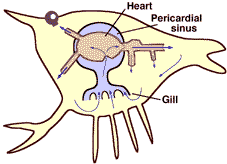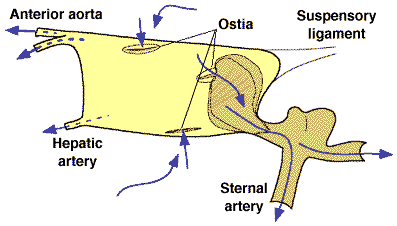|
DIGESTION
In
Bivalve’s digestive system it consists of a digestive gland, an Anterior Adductor muscle, a stomach, a mouth, a foot,
gonad, kidney, gill, Posterior Adductor Muscle, Anus, Intestine, Ventricle, the Heart and siphons. They have a one-way digestive
tract.
Bivalves eat tiny organisms such as: protozoan, eggs, larvae, spores of algae and diatoms which are minute plants.
While eating water is also pulled into the incurrent siphon passing through the gills. The food particles and sediments that
were in the water get trapped into the mucus that is in the gills of bivalves. Cilia take the food and sediments to the mouth
where they are then digested in the stomach. Cilia helps crystalline style which is the gelatinous rod rotates and rubs against
the stomach wall. The digestive gland releases enzymes to begin digesting the food. The cells in the digestive glands help
to complete the digestion of food.
Excretion
Mollusks
have an excretory structure called the Nephridia. Nephridium is an organ that helps to eliminate wastes from their bodies.
Some have more then one Nephridia.
Large
food particles, sediments and excess food turns to waste and travels to the mantle where it is discarded through the excurrent
siphon.
Respiration
Mollusks have gills for supplying blood throughout the body and for gas exchanges such as oxygen and
carbon dioxide.
Bivalves have
one pair of long gills. When inhaling oxygen in the water, bivalves have 2 siphons that help to inhale and exhale oxygen and
carbon dioxide. When oxygen enters the incurrent siphon it circulates throughout the body into the heart, out the ventricles
releasing carbon dioxide through the excurrent siphon.
Bivalves have an open circulatory system. The open circulatory
system is common to molluscs. Open circulatory systems pump blood into a hemocoel with the blood diffusing back to the circulatory
system between cells. Blood is pumped by a heart into the body cavities, where tissues are surrounded by the blood.


|
| A crayfish heart is an example of open circulation |
|

